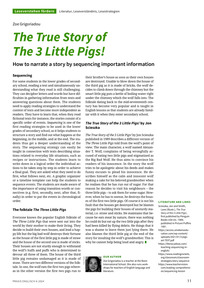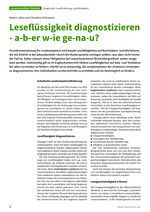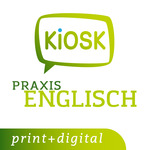The True Story of The 3 Little Pigs! How to narrate a story by sequencing important information
Bei Bezahlung über Paypal und Kreditkarte können keine Sonderkonditionen gewährt werden.
Melden Sie sich dafür bitte mit Ihrem Kundenkonto an.
Frische Ideen für den Englischunterricht!
Ihr Wegweiser zu den wichtigsten Seiten von PRAXIS ENGLISCH:
Mehr zur Zeitschrift| Produktnummer | OD200041015259 |
| Schulform | Realschule, Realschule plus, Sekundarschule, Mittelschule, Regelschule, Regionale Schule, Oberschule, Integrierte Gesamtschule, Gymnasium, Sekundarstufe II, Berufsgrundbildungsjahr, Berufsfachschule, 2-jährige |
| Schulfach | Englisch |
| Klassenstufe | 5. Schuljahr bis 6. Schuljahr |
| Seiten | 9 |
| Erschienen am | 02.12.2024 |
| Dateigröße | 224,8 kB |
| Dateiformat | PDF-Dokument |
| Autoren/ | Zoe Grigoriadou |
| Schlagworte | Literatur, Lesestrategien, Leseverständnis |
For some students in the lower grades of secondary school, reading a text and simultaneously understanding what they read is still challenging. They can decipher letters and words but have difficulties in gathering information from texts and answering questions about them. The students need to apply reading strategies to understand the content of texts and become more independent as readers. They have to learn that, when they read fictional texts for instance, the stories consist of a specific order of events. Sequencing is one of the first reading strategies to be used in the lower grades of secondary school, as it helps students to structure a story and find out what happens at the beginning, in the middle, and at the end. The students thus get a deeper understanding of the story. The sequencing strategy can easily be taught in connection with texts describing situations related to everyday life situations, such as recipes or instructions.














